Abstract
A theoretical account is given for long- and short-term changes in populations of neurons subject to independent rules for pre- and postsynaptic modification. The postsynaptic rule proposes that coactivated heterosynaptic inputs to a neuron alter the states of ion channels at a given synapse, thereby changing the susceptibility of these channels to local biochemical alterations. The resultant change in the population distribution of local channel states affects the postsynaptic potential produced at the synapse by subsequent inputs. This postsynaptic rule applies, in general, to short-term changes at specific individual synapses. In contrast, the presynaptic rule applies in general to long-term changes in the whole neuron, resulting in an altered probability of transmitter release. Because of neuroanatomical constraints, the presynaptic rule affects large numbers of synapses defined by the connectivity of that neuron and distributed nonspecifically over the population. We show that the combined action of the two independent rules upon populations of neurons arrayed in interconnected neuronal groups leads to consistent alterations of the probability of firing of certain circuits while maintaining variability in the response of the population to novel input. This "dual rules" model fulfills the requirements of the theory of neuronal group selection.
Full text
PDF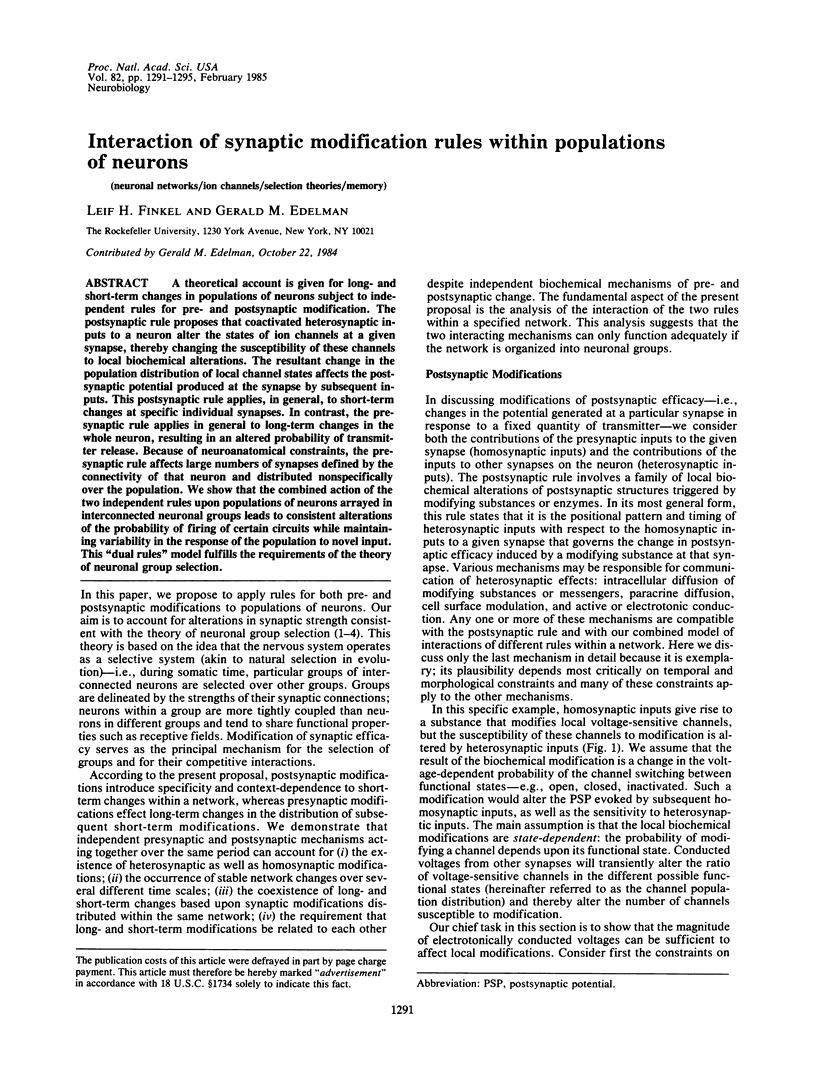
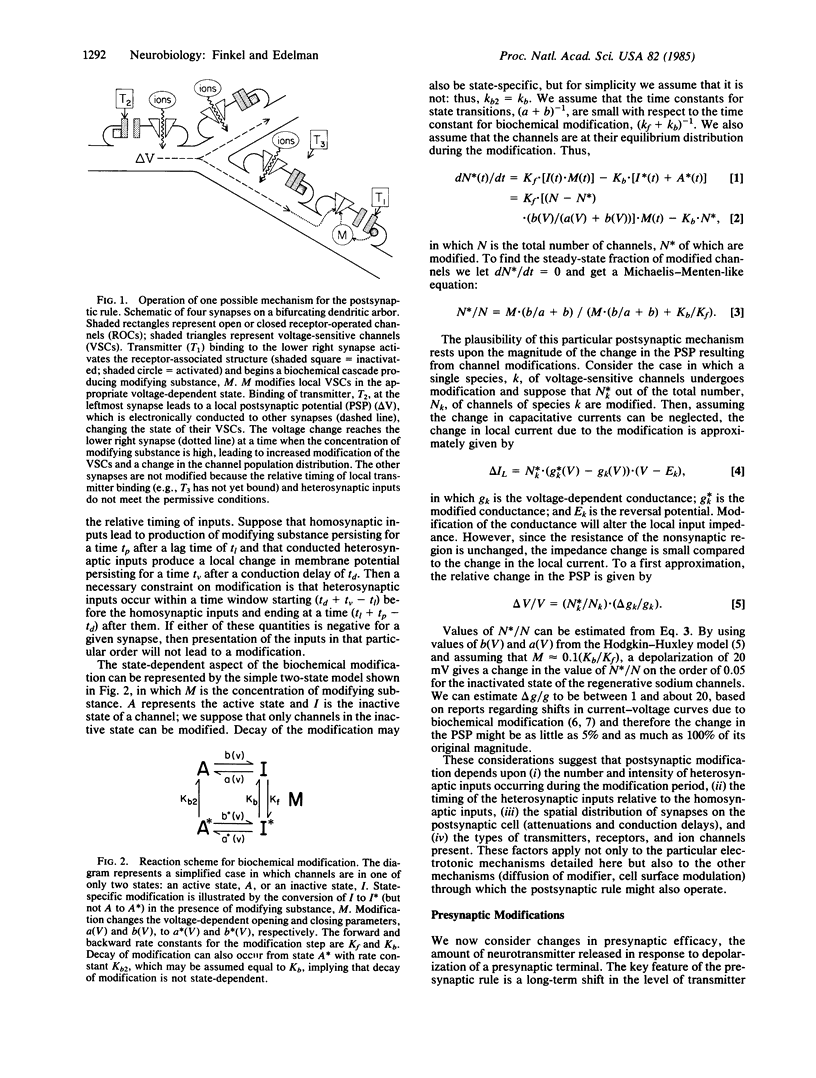
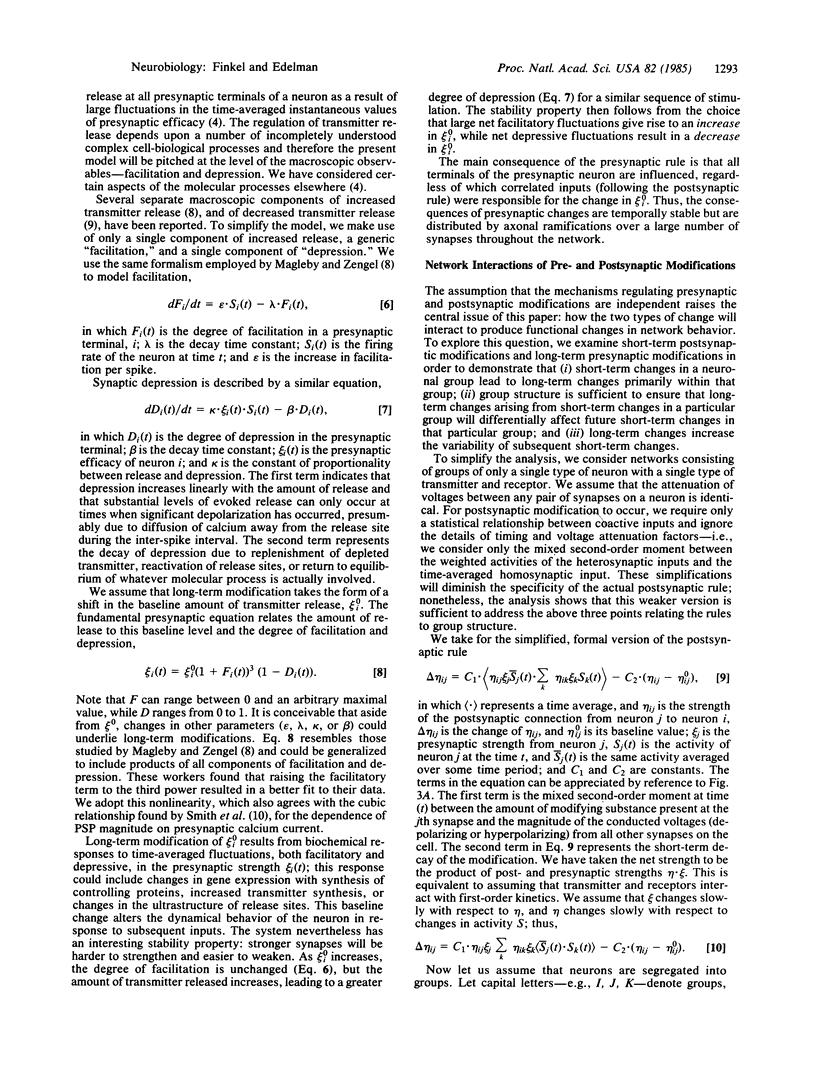
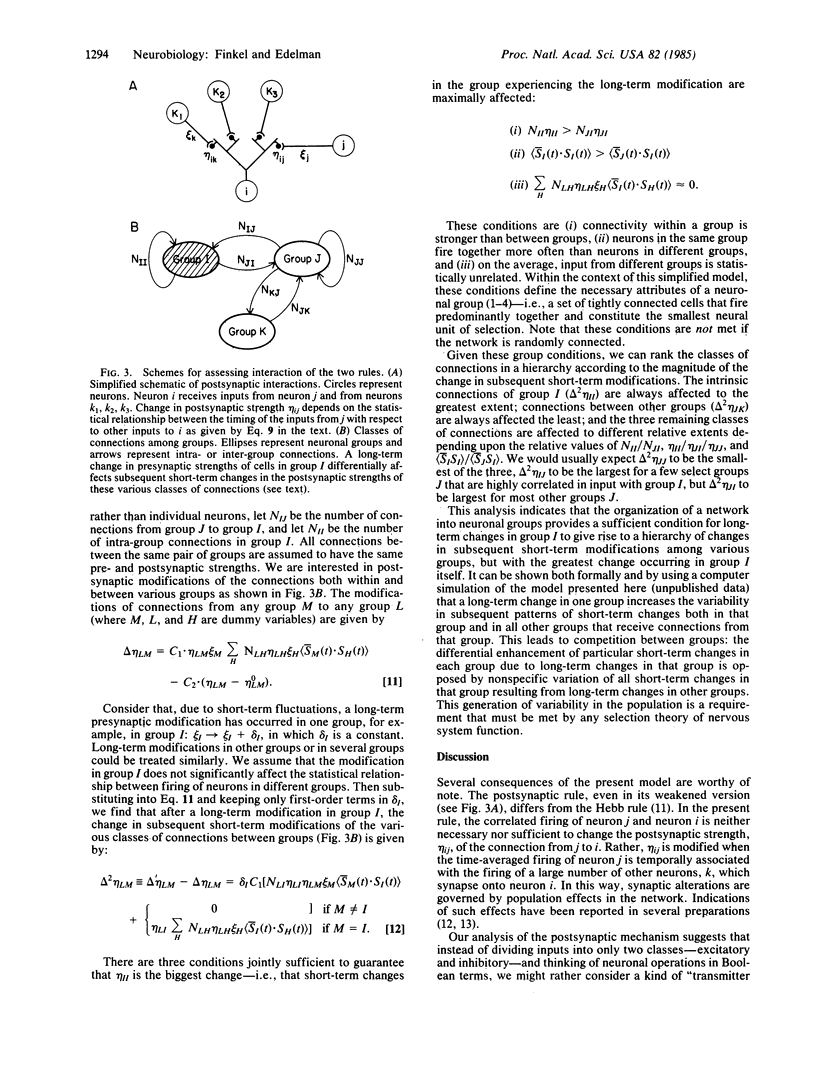
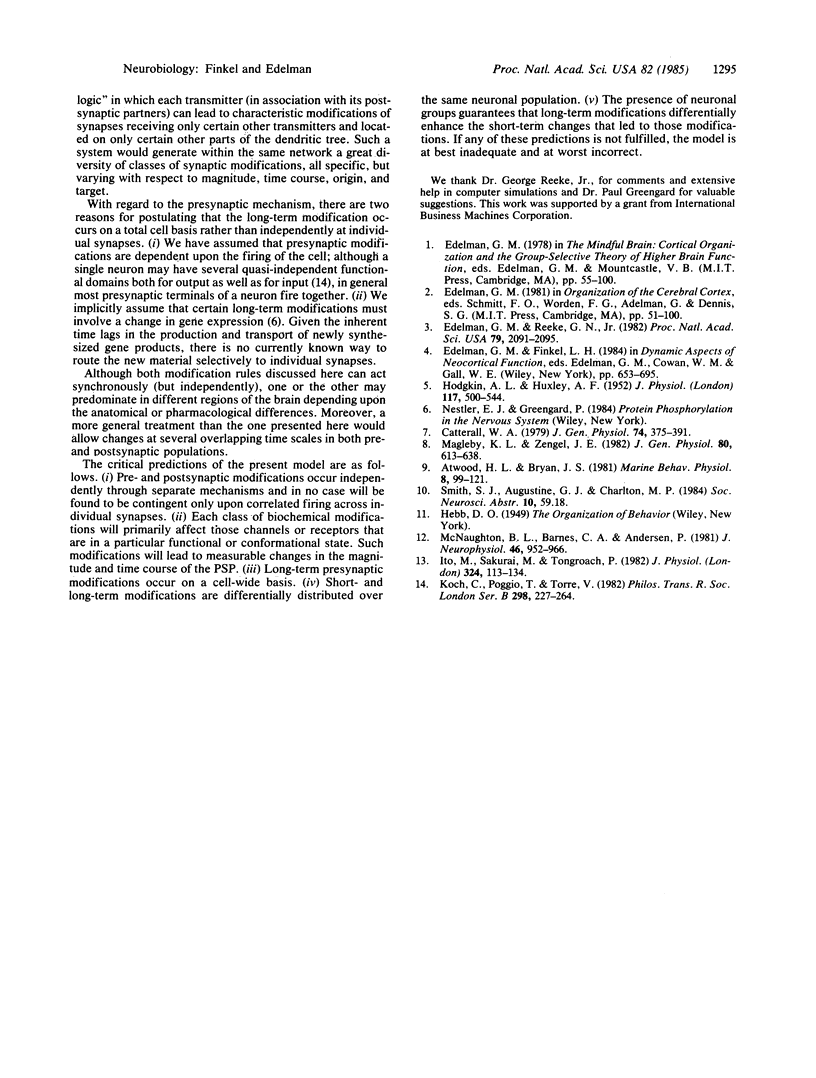
Images in this article
Selected References
These references are in PubMed. This may not be the complete list of references from this article.
- Catterall W. A. Binding of scorpion toxin to receptor sites associated with sodium channels in frog muscle. Correlation of voltage-dependent binding with activation. J Gen Physiol. 1979 Sep;74(3):375–391. doi: 10.1085/jgp.74.3.375. [DOI] [PMC free article] [PubMed] [Google Scholar]
- Edelman G. M., Reeke G. N., Jr Selective networks capable of representative transformations, limited generalizations, and associative memory. Proc Natl Acad Sci U S A. 1982 Mar;79(6):2091–2095. doi: 10.1073/pnas.79.6.2091. [DOI] [PMC free article] [PubMed] [Google Scholar]
- HODGKIN A. L., HUXLEY A. F. A quantitative description of membrane current and its application to conduction and excitation in nerve. J Physiol. 1952 Aug;117(4):500–544. doi: 10.1113/jphysiol.1952.sp004764. [DOI] [PMC free article] [PubMed] [Google Scholar]
- Ito M., Sakurai M., Tongroach P. Climbing fibre induced depression of both mossy fibre responsiveness and glutamate sensitivity of cerebellar Purkinje cells. J Physiol. 1982 Mar;324:113–134. doi: 10.1113/jphysiol.1982.sp014103. [DOI] [PMC free article] [PubMed] [Google Scholar]
- Koch C., Poggio T., Torre V. Retinal ganglion cells: a functional interpretation of dendritic morphology. Philos Trans R Soc Lond B Biol Sci. 1982 Jul 27;298(1090):227–263. doi: 10.1098/rstb.1982.0084. [DOI] [PubMed] [Google Scholar]
- Magleby K. L., Zengel J. E. A quantitative description of stimulation-induced changes in transmitter release at the frog neuromuscular junction. J Gen Physiol. 1982 Oct;80(4):613–638. doi: 10.1085/jgp.80.4.613. [DOI] [PMC free article] [PubMed] [Google Scholar]
- McNaughton B. L., Barnes C. A., Andersen P. Synaptic efficacy and EPSP summation in granule cells of rat fascia dentata studied in vitro. J Neurophysiol. 1981 Nov;46(5):952–966. doi: 10.1152/jn.1981.46.5.952. [DOI] [PubMed] [Google Scholar]



